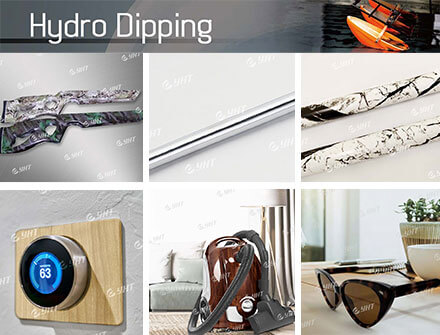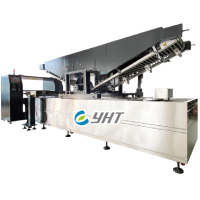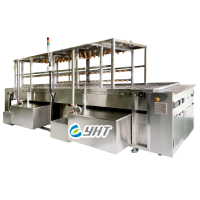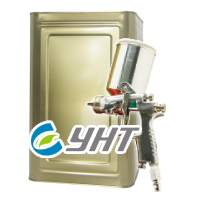Materials for Hydro Dipping | What Can and What Cannot?
Basically, you can use any material that can withstand being submerged in water for hydrographic designs. These materials may be metal, plastic, wood, glass, ceramics, fiberglass and various other materials. Here we’d like to answer questions that have been asked for a long time and all the time.
Hydro Dipping Works on Most Materials and Products
Can I do water transfer printing on my own clothing? My car interior? Or exterior? My shoes? My nails? Pet’s food plate? Beverage plastic bottles? Cosmetic box? No doubt we can list thousands of materials or products, however, some of them cannot be decorated or not properly decorated by water transfer printing. So, you may ask, how can I know what products or materials can be dipped, and what cannot be dipped?
Before getting more understanding about available materials, you need to know the hydro dipping process first. It includes 3 steps: base coating, water transfer printing and top coating. Here we can see the process needs “COATING” and also needs “WATER”. In this case, any material that can withstand being submerged in water and also being coated is the right one for hydro dipping. Here we’d like to share the common materials that are used for hydrographic dipping business and projects.
Read Also : Beginner’s Guide to Hydrographic Water Transfer Printing
What Materials are suitable for Hydro Dipping?
1.
Wood
Yes. Wood is one of the suitable materials for hydro dipping. You must be very surprised. Wood is fully porous and absorbs water as well. Then why can it be done by hydro dipping? The reason is wood is a fixed shape, and we can use a base coat to cover the pores, and it becomes water-proofed.


2.
Metal
The answer is definitely YES for metal to hydro dipping. Many people have concerns whether metal can be decorated by hydro printing or not. The important thing is you need to find out the suitable base paint, same as other material, to cover the surface. Then you can continue to process water transfer printing.


3.
Plastic
Well, plastic range is too wide. Let’s focus a little bit on some common materials.



-
ABS
Yes. ABS plastic is one of the suitable materials for hydro dipping. Most products made by ABS have a high chance to skip the process of primer and base coating, and you can direct the process to do water transfer printing. Because these products are prepared with the right paint already so that way it sticks to the printing films itself.
-
PP, PE, EVA
Regarding other plastics such as PP, PET or EVA, they have the same concern that you may have to take a test first. You have to prepare it right, and the print can stick to the actual part.
Read Also : 5 Tips for Choosing A Hydrographic Film Supplier
What Materials are NOT suitable for Hydro Dipping?
1.
Fabric
Natural fibers such as cotton and wool are hydrophilic. And also there is no available base coating and top coating for fabric.
2.
Paper
It is easy to understand that normal paper is not the suitable material for hydro dipping because it is not water-proofed. But there is a special paper density-fiberboard for industrial use that does not include this limit.
Can We Hydro Dip Without Primer and/or Base Coating?
The primer is the first necessary ingredient to hydro dipping. It promotes adhesion of the transfer film to the object. Different colors of base coat make your designs unique.
Primer and base coating are the bridge between object and hydrographic film. Using the correct primer will ensure a proper adhesion to the paint. Once you have chosen the pattern, the process of determining the base coat will be critical to the overall look desired. And the chosen color base will determine the overall look of the finished part. Generally speaking, providing a permanent base coat is essential for any hydro dipping.
For those products with the film patterns that don't need to be attached for long periods of time, you may consider skipping the process of base coating as a value of consideration.
Basically, you can use any material or product that can withstand being submerged in water for hydrographic designs. For more hydro dipping examples and applications, most common hydro dip gun patterns, or more designs of custom hydro dip films, please contact us.
- If you want to know more about these and our other hot hydro films or examples of cubic printings, please check the link below Water Transfer Printing Films. Or you can also read our blog Tips for Selecting the Right Hydro Dipping Film: Factors to Consider for Your Project and get more understanding about factors to consider for your projects.
-
To keep updated about the latest news from the YHT, please follow us on our Social Media Channels:
- YHT YouTube
- YHT Facebook
- YHT Instagram
- YHT Twitter
- YHT Pinterest














